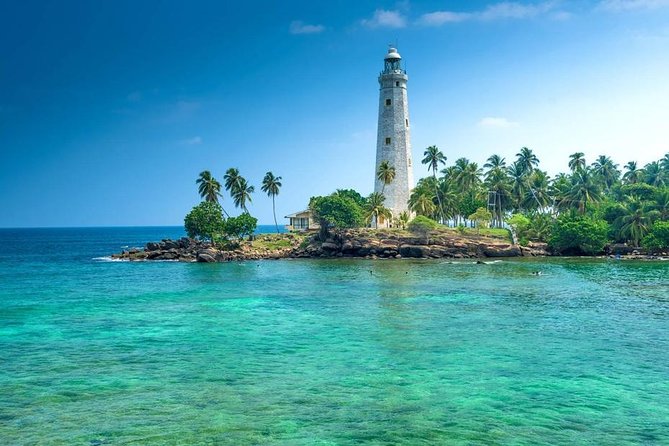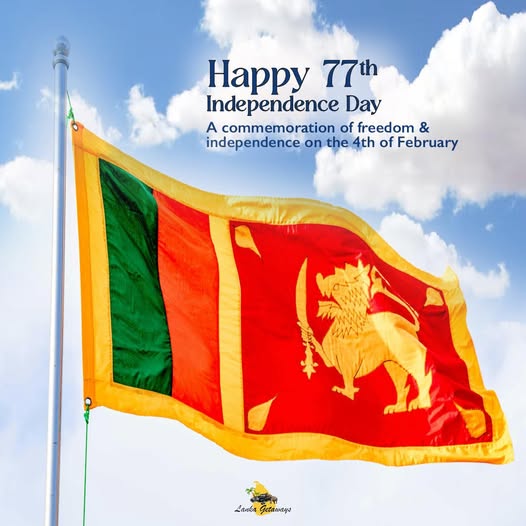Sri Lanka, an island nation in the Indian Ocean, has a rich and diverse history that reflects its cultural, political, and social evolution. The 77th Independence Day of Sri Lanka, celebrated on February 4th, 2025, marks a significant milestone in the country’s journey towards freedom, self-governance, and nationhood. This occasion is not just a moment of pride, but also a time for reflection, as Sri Lanka continues to face challenges in its pursuit of peace, development, and prosperity.
The story of Sri Lanka's independence is one of struggle, resilience, and the unyielding spirit of its people. From the colonial period to the present day, Sri Lanka’s history is a testament to the islanders' unwavering determination to maintain their identity and sovereignty. In this blog post, we will explore the history of Sri Lanka's independence, the significance of the 77th anniversary, and the challenges the country faces as it looks to the future.
Historical Background: The Road to Independence
Sri Lanka, formerly known as Ceylon, was under colonial rule for nearly four and a half centuries. First, the Portuguese arrived in the 16th century, followed by the Dutch in the 17th century. In 1796, the British took control, establishing a colony that would remain under their rule until 1948. The colonial period saw significant changes in the country’s political, economic, and social structures. The British introduced tea cultivation, which became the backbone of the economy, and reshaped the island’s infrastructure.
While colonial rule brought about modernization, it also led to exploitation and division within Sri Lankan society. The British employed a divide-and-rule strategy, favoring certain ethnic groups over others, which sowed the seeds for future ethnic tensions. The introduction of new social hierarchies, along with the systematic disempowerment of local governance systems, created a complex and often fractured society.
The drive for independence in Sri Lanka can be traced back to the early 20th century when nationalist movements began to take shape. The first formal push for self-rule came with the Ceylon National Congress (CNC), formed in 1919, which sought to represent the interests of the Sri Lankan people. This period saw the emergence of key figures such as Don Stephen Senanayake, F. R. Senanayake, and G.G. Ponnambalam, who played pivotal roles in the independence movement.
By the 1930s, the demands for greater self-rule intensified. The Ceylon Legislative Council, established in 1833, was gradually expanded to include more Sri Lankan representatives. In 1931, the Donoughmore Commission introduced constitutional reforms, granting universal suffrage and giving the Sri Lankan people a stronger voice in governance. Despite these steps toward autonomy, the British government continued to control key aspects of the country's administration.
Sri Lanka’s path to independence was influenced by global events, particularly World War II. The war disrupted colonial powers worldwide, and the struggle for independence gained momentum across the British Empire. In Sri Lanka, calls for self-governance grew louder, culminating in the Sri Lanka Freedom Party’s formation in 1942, led by Don Stephen Senanayake.
The end of World War II marked a significant turning point in the colonial world. The British, weakened by the war and facing growing pressures from nationalist movements in their colonies, began to reconsider their imperial ambitions. After years of negotiations, Sri Lanka achieved independence on February 4, 1948, becoming a dominion within the British Commonwealth.
Significance of the 77th Independence Day
The 77th Independence Day of Sri Lanka is an opportunity to celebrate the country’s rich history and its progress since 1948. Over the past seven decades, Sri Lanka has witnessed remarkable changes. From gaining full independence in 1972, when it became a republic, to becoming a beacon of resilience after facing decades of civil conflict, Sri Lanka has carved out its unique path in the global arena.
However, as Sri Lanka celebrates its 77th year of independence, it is also a time to reflect on the challenges the nation has faced and continues to confront. The last few years have been particularly difficult, with the country grappling with economic crises, political instability, and social unrest. Despite these challenges, Sri Lanka's independence remains a powerful symbol of the nation’s resilience and its people’s determination to overcome adversity.
Independence Day is not only about celebrating the past but also about looking forward to the future. It is a day for the people of Sri Lanka to unite, regardless of their ethnic, religious, or political backgrounds, and to reaffirm their shared commitment to building a stronger, more prosperous nation.
The Challenges Sri Lanka Faces
While Sri Lanka has made significant strides since gaining independence, the country continues to face several complex challenges that threaten its social cohesion, economic stability, and political unity.
1. Ethnic and Religious Tensions
One of the most pressing challenges for Sri Lanka is its ethnic and religious diversity. The country is home to several major ethnic groups, including the Sinhalese, Tamils, and Muslims. Throughout Sri Lanka’s history, tensions between these groups have often escalated into conflict. The most significant of these tensions culminated in the Sri Lankan Civil War, which lasted from 1983 to 2009.
The war was primarily between the Sinhalese-majority government and the Liberation Tigers of Tamil Eelam (LTTE), a Tamil separatist group that sought an independent Tamil state. The war left tens of thousands dead and millions displaced, and its legacy continues to affect Sri Lanka's political landscape. Reconciliation between the ethnic communities remains a difficult and ongoing process, with many Tamils still seeking justice for the atrocities committed during the war.
Efforts have been made over the years to promote national unity, but the scars of the conflict are still visible in many parts of the country. The government has taken steps to promote peace and reconciliation, but progress has been slow, and ethnic tensions remain a sensitive issue.
2. Economic Challenges
Sri Lanka’s economy has faced numerous difficulties, particularly in recent years. The country was hit hard by the 2022 economic crisis, which was precipitated by a combination of factors, including poor economic management, high levels of debt, and the impacts of the COVID-19 pandemic. Inflation skyrocketed, the national currency devalued, and the country faced severe shortages of essential goods like fuel and medicine.
While the government has implemented reforms and sought assistance from international bodies such as the International Monetary Fund (IMF), the road to economic recovery is long and uncertain. Sri Lanka needs to stabilize its economy, diversify its industries, and improve its infrastructure to ensure sustainable growth.
3. Political Instability
In recent years, Sri Lanka has experienced significant political instability. Public dissatisfaction with government corruption, economic mismanagement, and lack of accountability led to widespread protests in 2022, culminating in the resignation of then-President Gotabaya Rajapaksa. The political crisis exposed deep flaws in the governance system and highlighted the need for greater transparency, accountability, and reforms.
While new leadership has emerged, the political situation remains fragile, and the country is still grappling with a lack of trust in its political institutions. The 77th Independence Day serves as a reminder of the need for unity, cooperation, and good governance in order to address these pressing issues.
4. Environmental Challenges
Sri Lanka’s natural environment is also under threat from deforestation, climate change, and the degradation of natural resources. The country’s rich biodiversity and ecosystems are vital for its agricultural sector, tourism industry, and overall well-being. However, rapid urbanization, industrialization, and unsustainable agricultural practices have placed immense pressure on the environment.
Climate change has exacerbated issues like flooding, droughts, and rising sea levels, which threaten the livelihoods of millions of Sri Lankans, particularly those in rural areas. Addressing these environmental challenges requires comprehensive policies, international cooperation, and the active involvement of local communities.
A Glimpse into the Future: Hope and Resilience
As Sri Lanka celebrates its 77th Independence Day, there is much to reflect on and much to hope for. While the country faces significant challenges, the resilience and determination of the Sri Lankan people offer hope for the future.
The road ahead will not be easy, but Sri Lanka has shown time and again that it can overcome adversity. The nation’s independence, achieved after centuries of struggle, is a reminder that through unity, perseverance, and a shared vision, Sri Lanka can continue to grow and thrive.
The 77th Independence Day is a time to celebrate the nation’s achievements, honor its sacrifices, and recommit to building a more inclusive, prosperous, and peaceful future. The path forward lies in acknowledging past mistakes, embracing diversity, and working together to address the economic, political, and social challenges that continue to shape Sri Lanka's journey.
In the spirit of independence, let the 77th anniversary serve as a call to action: to rebuild, to heal, and to unite for the greater good of Sri Lanka and its people. May the nation's rich history inspire future generations to create a brighter and more sustainable future for all.



